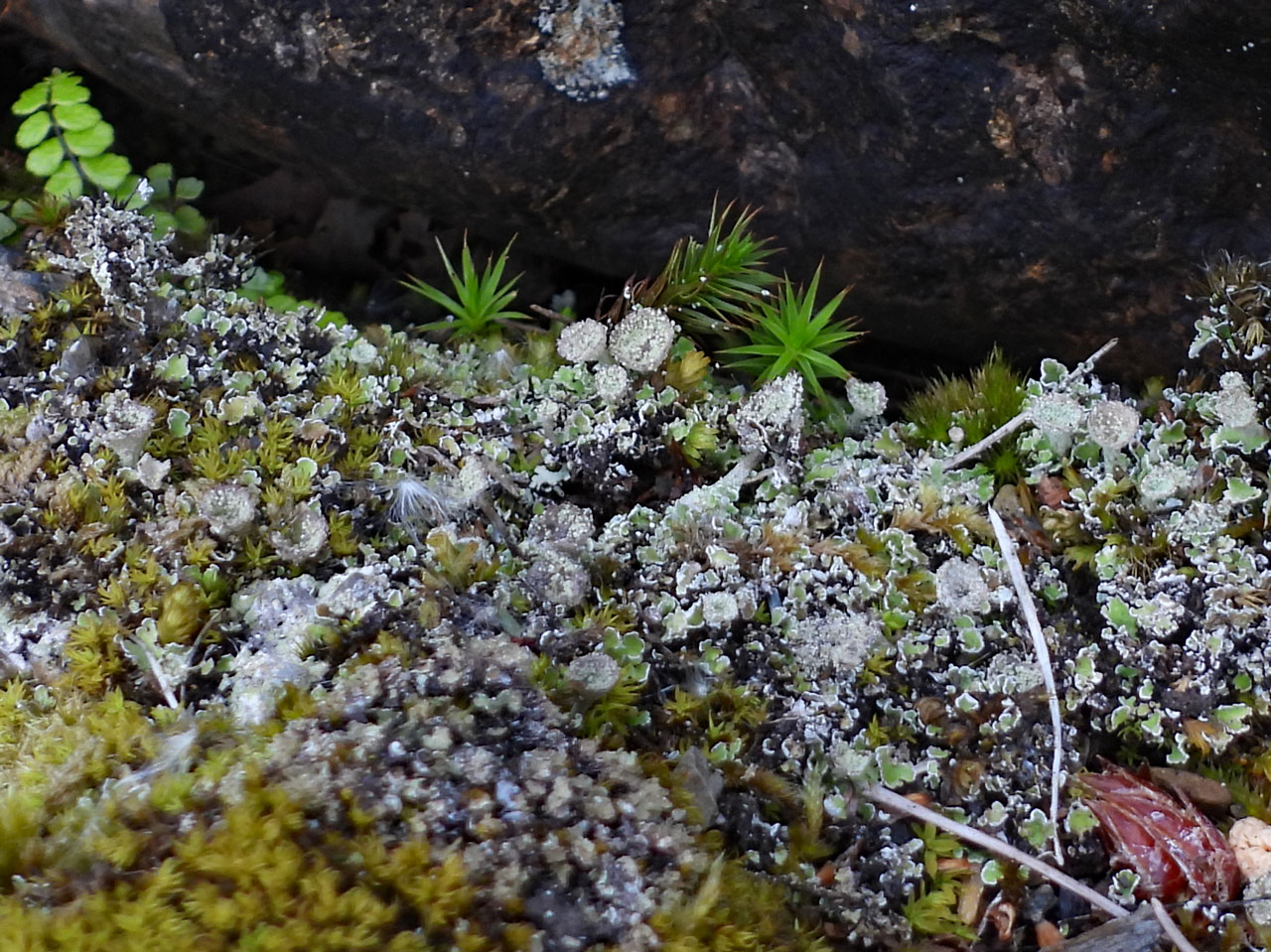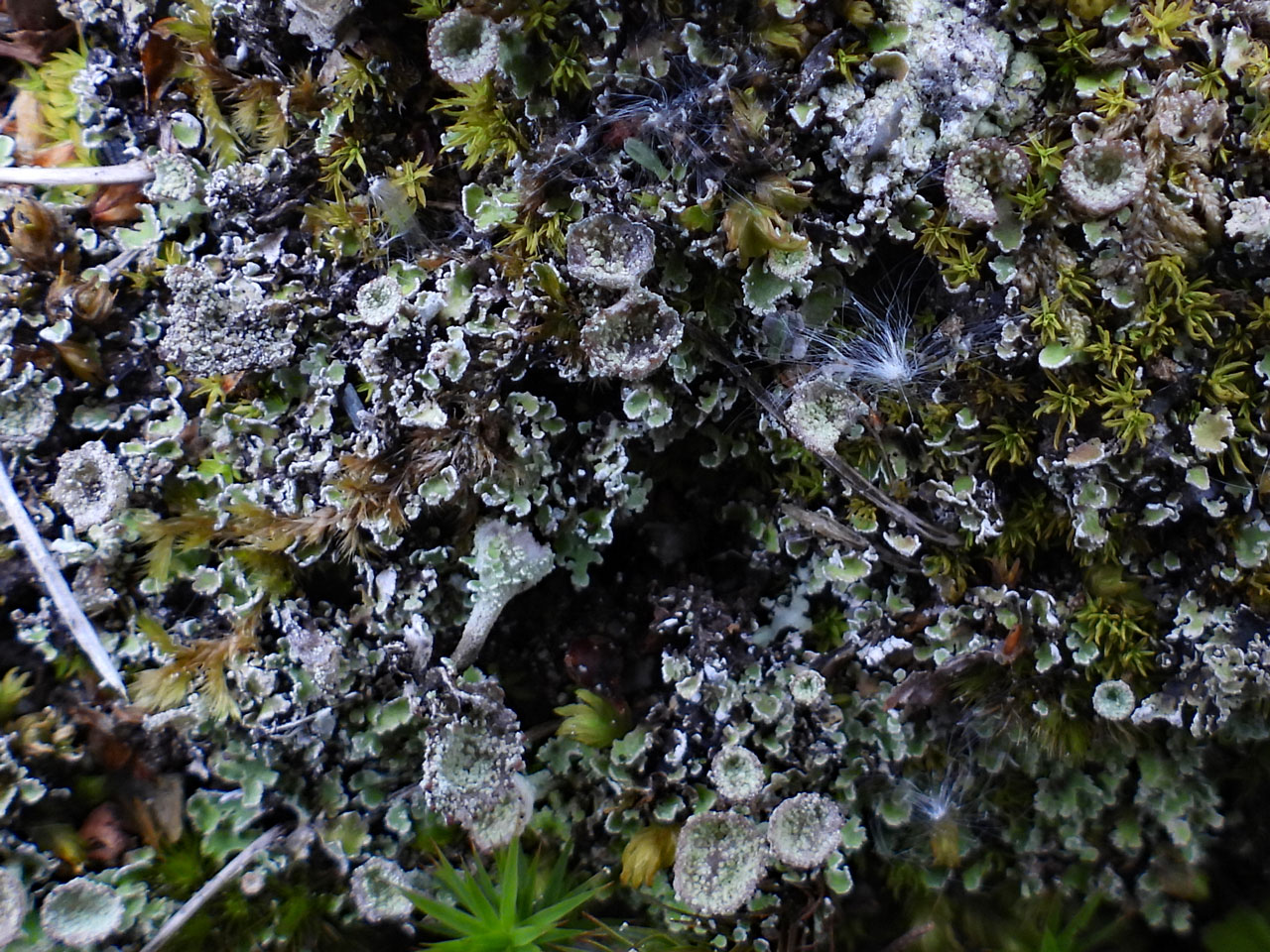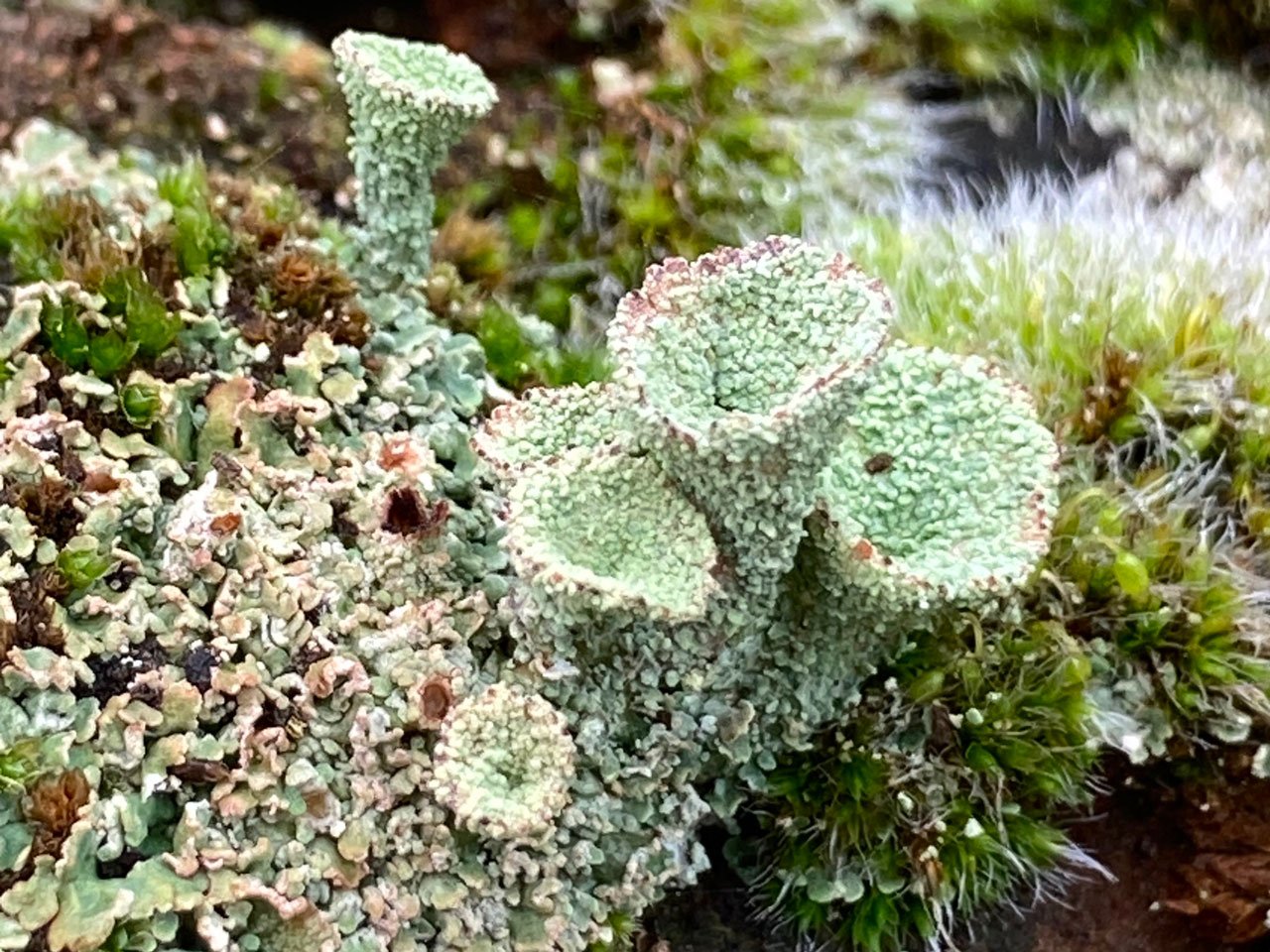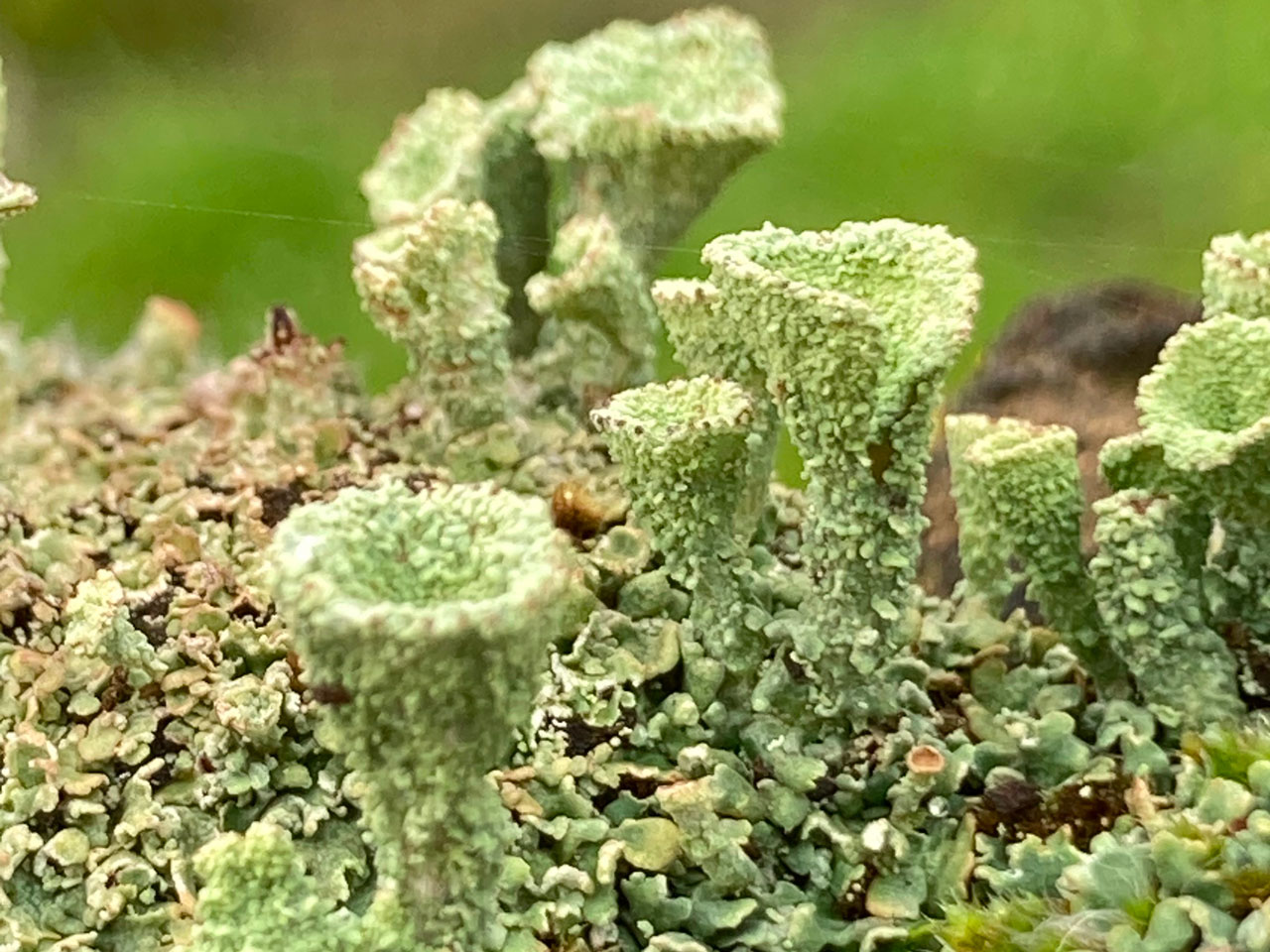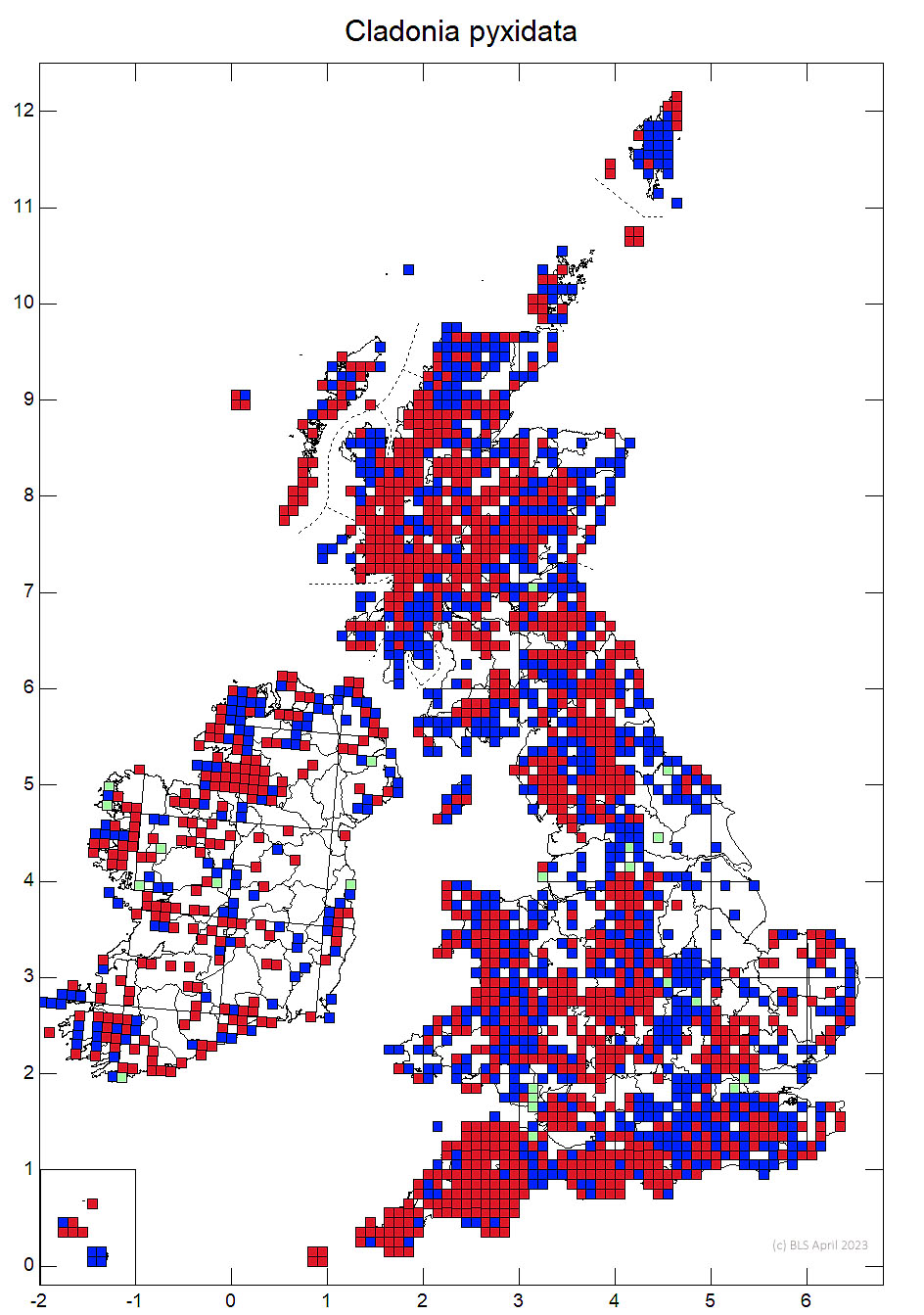Cladonia pyxidata
The classic Pixie Cup, defined by the combination of podetia and cups with smooth corticate granules, while lacking any decorticate granules or soredia, along with small rounded basal squamules. The closely related Cladonia chlorophaea differs in having, powdery, granular granules, more rarely soredia. C. cyathomorpha, the schizidiate morph of C. humilis, C. pocillum and C. monomorpha all have similar podetia with cups and corticate granules but have larger basal squamules. The former also has veins on the underside of the squamules.
Typical of less acidic to mildly base rich habitats on rocks, soil and tree bark. This species has been frequently wrongly identified and many records probably belong to other species.
Podetia 0.5–1.5 (–3) cm tall, grey, occasionally ± brownish; cups 3–10 mm diam., ± regular, rarely proliferating from the rim, tapering regularly towards the base, stalk very short or hardly present; surface uneven with coarse, smooth, corticate granules, particularly well-developed within the cups, often with scattered, partially decorticate pale areas; soredia absent. Basal squamules often rather small, rounded or elongate, with few indentations, sparse or often abundant, becoming ± erect. Apothecia and pycnidia brown, common, on cup rim; apothecia often shortly elevated. Thallus C–, K–, KC– , Pd+ red, UV– (fumarprotocetraric acid).
A variable and polyphyletic species, which is in need of revision with further molecular studies (Stenroos et al. 2019). C. chlorophaea differs in having more slender, gradually tapering cups with a short stalk and has powdery, granular granules, more rarely soredia, in the upper part of the podetium and within cups. Poorly developed specimens may be impossible to distinguish from C. pyxidata. C. cyathomorpha is similar but has larger squamules with veins on the underside and the granules on the podetia are mainly inside the scyphi, and is found on acid mossy rocks and trees. See also the schizidiate morph of C. humilis, C. pocillum and C. monomorpha. All of these taxa have similar podetia with cups and corticate granules but have larger basal squamules.
On mossy rocks, walls, tree trunks and mildly acid to mildly base rich soil, chiefly in rather dry habitats

Common throughout Britain and Ireland ion less acidic areas and habitats. This species has been frequently wrongly identified and many records probably belong to other species.
Pino-Bodas, R., Sanderson, N., Cannon, P., Aptroot, A., Coppins, B., Orange, A. & Simkin, J. (2021). Lecanorales: Cladoniaceae, including the genera Cladonia, Pilophorus and Pycnothelia. Revisions of British and Irish Lichens 19: 1-45. Link
Stenroos, S., Pino-Bodas, R., Hyvonen, J., Lumbsch, H.T. & Ahti, T. (2019). Phylogeny of the family Cladoniaceae (Lecanoromycetes, Ascomycota) based on sequences of multiple loci. Cladistics 35: 351–389
Text by N A Sanderson, based Pino-Bodas et al (2021)
